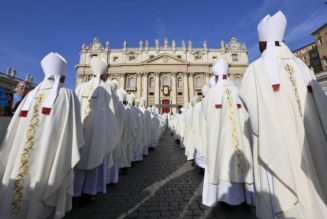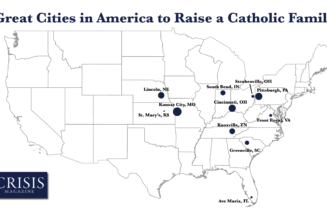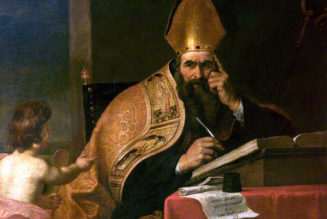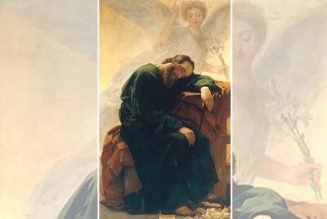By DONAL ANTHONY FOLEY
As Advent draws to a close, we approach the feast of Christmas having passed through four weeks of preparation, a traditional symbol of the four thousand years between the fall of man and the coming of the Redeemer.
Christmas is a time of joy, but it is also a time of mystery, and probably the most intriguing aspect of Christmas is the story of the Wise Men or Magi. In St. Matthew’s Gospel we read of their journey to visit the Christ Child during the reign of Herod, when they followed a mysterious Star in order to meet Christ, the Light of the World, in the form of a small baby.
On the 6th of January we celebrate this event as a feast, that is, the Epiphany, or Manifestation, of Christ to the world in the persons of the Magi. The Jewish shepherds had worshiped Him on Christmas night, following the apparition of the angelic host, and now it was the turn of the Gentiles.
It is believed that the Magi came from ancient Babylonia, or ancient Persia, that is, modern Iraq and Iran respectively; and further that they may have become familiar with the Hebrew Scriptures through contact with the writings of Daniel the prophet. In addition, they may also have known of Balaam’s prophecy about the future Messiah, dating back to the days of the Exodus: “I see him, but not now; I behold him, but not nigh: a star shall come forth out of Jacob, and a scepter shall rise out of Israel” (Numb. 24:17).
In any event, the Epiphany has been traditionally regarded as a second Christmas, and indeed for several centuries the birth of Christ was actually celebrated on this day, until, in the fourth century, the Church in Rome directed that all churches should keep the Nativity of the Lord on the 25th of December — which, according to an ancient tradition, was the actual day on which Christ was born.
The journey and adoration of the Magi are seen prophetically as prefiguring the conversion of the Gentile nations. Catholic tradition has regarded them as being three in number, and representative of the three sons of Noah, — Shem, Ham, and Japheth — who became the ancestors of the whole human race after the Flood.
The coming of the Magi to Christ was also seen, by some, as having been prophesied in the Old Testament, as for example in Psalm 72, where we read, “The kings of Tharsis and the islands shall offer presents: the kings of the Arabians and of Saba shall bring gifts.” Further on the psalm speaks of the “gold of Arabia” as one of gifts that would be offered. Likewise, the prophet Isaiah said, “A multitude of camels shall cover you, the young camels of Midian and Ephah; all those from Sheba shall come. They shall bring gold and frankincense, and shall proclaim the praise of the Lord” (60:6).
St. Matthew tells us that the Magi brought gifts of gold, frankincense, and myrrh, and offered them to the Christ Child, and later on this episode was linked with the figurative prophetic words given above and the Wise Men came also to be regarded as kings — and it is perfectly possible that they were indeed rulers of some sort in their own land, that is local princes, with positions of influence and authority. Assuredly they must have been of such a status, and come with a large retinue, in order that Herod should have shown such consideration for them, even if they were not actually kings.
But certainly, a number of early Christian writers, including Pope St. Leo, St. Hilary of Poitiers, and St. Jerome did regard the Wise Men as kings, and it is surely significant that St. Jerome in particular should make this point since he lived in the grotto at Bethlehem for many years, and so, apart from information he could have gleaned from elsewhere, he could also possibly have been aware of local traditions about the Nativity.
In addition to this, in a more general sense, St. Justin Martyr spoke about St. Joseph withdrawing to a grotto near the village on being unable to find lodgings in Bethlehem, while Origen tells us that the grotto with its manger could still be seen in his day. So, there is also a solid tradition as regards the actual place of Christ’s birth.
Regarding the Star of Bethlehem which the Magi followed, despite the fact that modern thinking equates it with natural phenomena such as a comet, or a supernova, or a conjunction of stars or planets, the tradition of the Church points to it as being wholly supernatural. This becomes clear if we examine the biblical account more closely.
When the Wise Men arrived at Jerusalem they announced that they had seen the star of the newborn King of the Jews in the East and had come to worship Him. Herod, perturbed by this news, made inquiries of the local scribes, and learnt that nearby Bethlehem had been prophesied as the Messiah’s birthplace (Micah 5:2).
But the Wise men discovered that neither Herod nor anyone else dwelling in Jerusalem had seen the Star since he asked them when it had appeared. Therefore, it is highly likely that it was visible only to the Magi, which indicates that it was a supernatural rather than a natural sign.
Following this encounter, the Wise Men resumed their journey, “and lo, the star which they had seen in the East went before them, till it came to rest over the place where the child was” (Matt. 2:1-9). If the Star had been a natural sign, a supernova or a comet, or a conjunction of planets, then it could not have stopped over the precise place where the Child was, that is over the grotto at Bethlehem.
And the Star must have been quite close to the Earth, right over the grotto, if it was to be of any use as a sign.
This is what the fourth-century Church Father St. John Chrysostom says on this point: “How then, tell me, did the star point out a spot so confined, just the space of a manger and shed, unless it left that height and came down, and stood over the very head of the young Child? And at this the evangelist was hinting when he said, ‘Lo, the star went before them, till it came and stood over where the young Child was’.”
Christmas Day And The Child
According to tradition, as St. Bede the Venerable (672-735) informs us, the names of the Magi were Melchior, Caspar, and Balthazar; and according to tradition, too, after seeing Christ they became His followers and were so zealous that they were eventually martyred.
Their relics were venerated at Constantinople, the capital of the Eastern Roman Empire, and then at Milan, before eventually being transferred to Cologne Cathedral. There, in the twelfth century, they were housed in a magnificent, gilded reliquary, which can still be seen to this day.
Two thousand years ago, the Magi followed the miraculous Star to Bethlehem and were privileged to see the newborn King of the Jews, the Christ Child; and we too can look forward to experiencing the joy of our encounter with Him on Christmas Day.
- + + (Donal Anthony Foley is the author of a number of books on Marian Apparitions, and maintains a related website at www.theotokos.org.uk. He has also written two time-travel/adventure books for young people, and the third in the series is due to be published shortly — details can be seen at: http://glaston-chronicles.co.uk)
Join Our Telegram Group : Salvation & Prosperity








